Kitchen tools can come in quite handy and be of tremendous help when it comes to cooking with efficiency. Cutting boards are one such tool because let’s be honest, nothing else in the kitchen comes close to the utility of a good chopping board. You use it to chop, dice and slice all kinds of veggies, fruits, dry fruits, and even meats. Often, it is used as a base to clean salad leaves and make sandwiches.
A chopping board is perhaps one of the most used tools in the kitchen, second only to, perhaps a knife. While a lot of electric choppers are available in the market and do indeed help you chop up large portions quickly, a chopping board is still preferred by many on a day to day basis and has held its position as a more efficient and a more popular way of cutting veggies.
However, with various materials used to make the cutting boards available in the market, the decision to choose the appropriate board type for your needs can be a difficult task. But, worry not, as in this cutting board guide we have put together the best set of tips and guidelines that’ll help you go through each of these chopping board types. These will make your task easy as we answer all your questions about buying a chopping board, such as how to choose a chopping board and much more.
Related Reading:
We reviewed multiple brand cutting boards to come out with the best chopping board brand in India.
Table of Contents
Watch Video: Essential Factors To Look For While Buying Chopping Board For Your Kitchen
Factors to Consider When Buying a Chopping Board
Buying a good and right kind of chopping board is essential to perform everyday chopping tasks. Hence, consider these factors before buying one based on your needs.
1. Types of Chopping Board
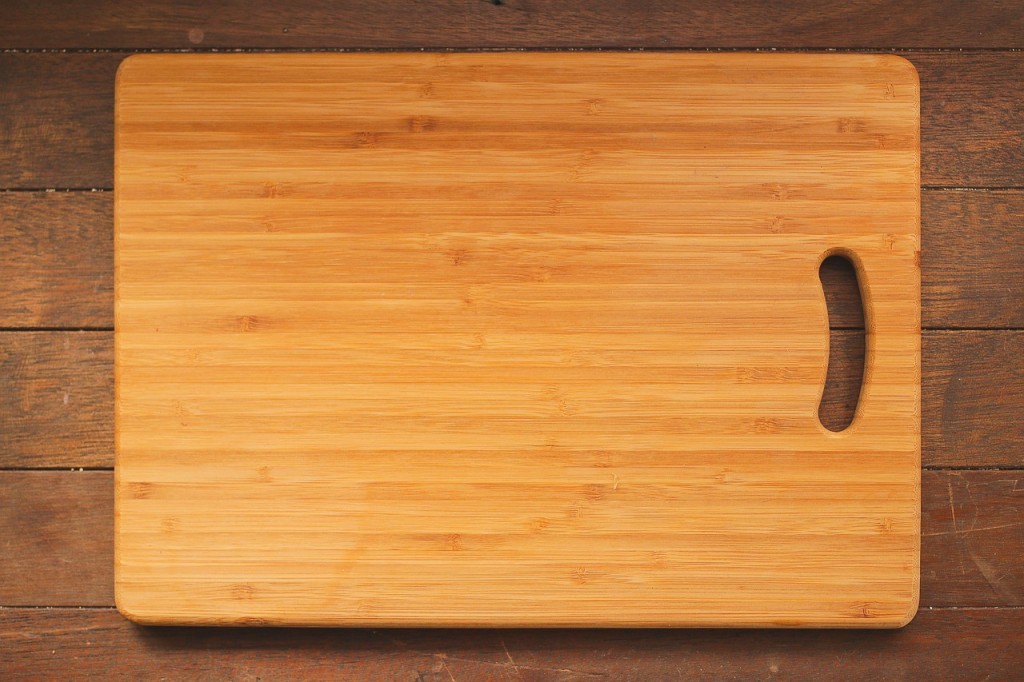
When you go to buy a chopping board, you will find that there are different types of chopping board available in the market based on its material, each having its pros and cons.
- Plastic Board (Polyvinyl Acetate)
- Plastic Board (High Density PolyEthylene)
- Wooden Chopping Boards
- Rubber Chopping Boards
- Glass Chopping Boards
- Bamboo Chopping Boards
- Silicone Chopping Boards
- Steel Chopping Boards
2. Cutting Comfort and Safety
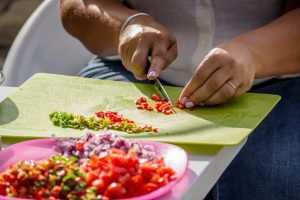
Our kitchen can be a dangerous place, especially when the necessary precautions are not taken. Something as simple as a chopping board can lead to unnecessary knife cuts if it is slippery. A chopping board must always be skid-proof, and sturdy.
3. Durability
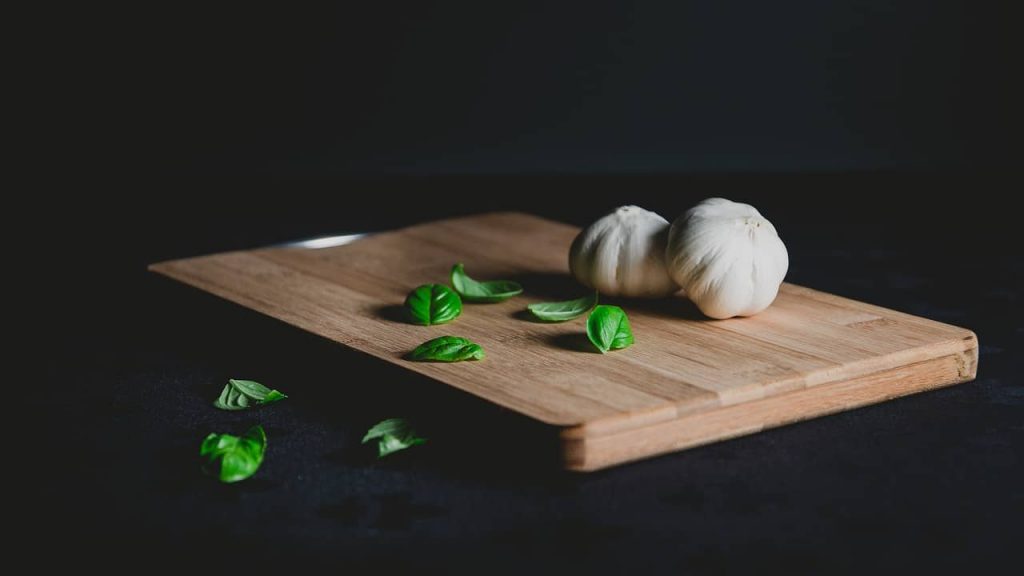
We don’t change/replace our chopping boards like other consumables in the kitchen, so it makes sense that it should last a while. Despite frequent use, a chopping board should not make the edges of the knife blunt or create deep grooves where bacteria can thrive.
4. Ease to Clean
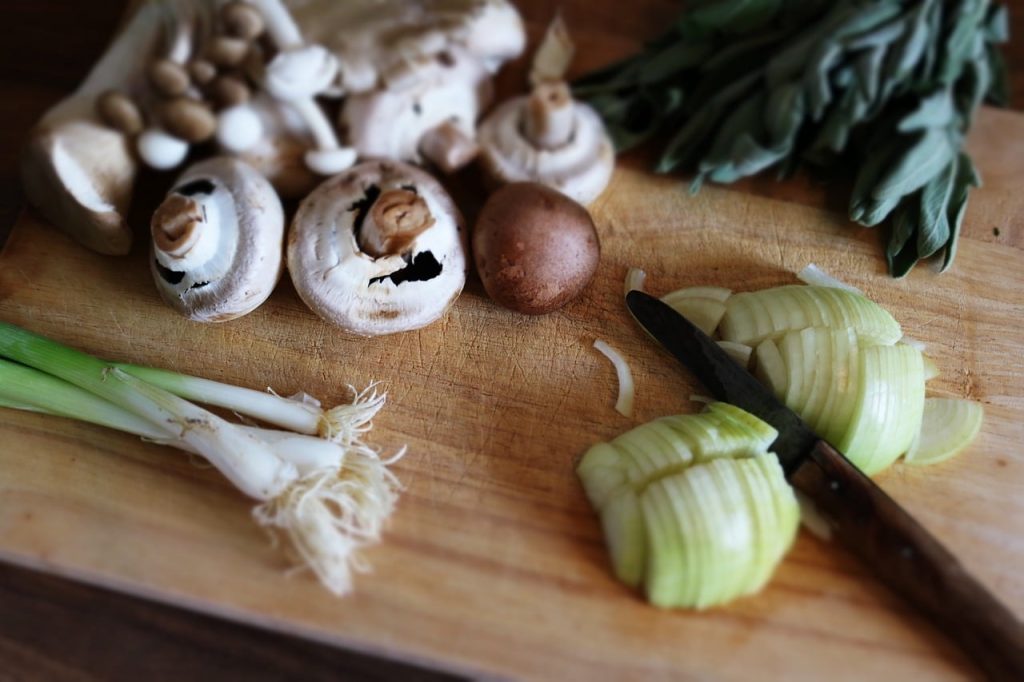
Being an integral part of the kitchen, the cleanliness of the chopping board plays an important part in the overall hygiene of the entire food preparation process.
The cutting marks left on the surface of the board prove to be a great place of resting for bacteria and other pathogens. Hence, it is important that you maintain and clean your board thoroughly every once in a while.
5. Cross Contamination
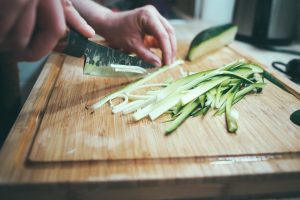
Cross contamination happens when the bacteria from one place are transferred to another place without user intent. Therefore, it is viable to make sure that this does not happen while using chopping boards.
Make sure that you use different boards for raw meat items and veggies or other ready-to-eat food items, for it is the most common cause of cross-contamination. And also avoid using a cloth to clean the board, as the bacteria from the board can get attached to the cloth and then spread all over the kitchen.
Wrapping Up
So, in the end, it would be safe to say that wood is best, especially hardwood. There’s a whole lot of variety out there, choose wisely.
Let us know in the comment section which chopping board material you prefer and why.
Related Reading:
We reviewed the Pigeon mini compact chopper. Read on to know if it’s worth buying?
Frequently Asked Questions
1. What is the most hygienic chopping board?
A wooden or silicone material-based chopping board is an ideal choice if hygiene is one of the important factors while buying a chopping board, because of its self-healing property which makes it less possible for pathogens to grow.
2. What is the best material for a chopping board?
Stainless steel, wooden and silicone are the best materials for a chopping board as they are durable, easy to use, easy to clean and hygienic.
3. Which chopping board is best, wooden or plastic?
Wooden chopping boards are the best in the market. They are more durable and resilient to cutting action than plastic. Also, unlike plastic, wooden chopping boards have a self-healing property that does not allow bacterial growth.
4. How to disinfect a wooden chopping board?
To disinfect a wooden chopping board, wash it with lemon, salt or soapy water.
5. Can chopping boards be used for raw meat?
Yes. Chopping boards can be used for chopping raw meat, mainly red chopping boards are preferred.
Also, make sure to use a different chopping board for raw meat and ready to eat food to prevent cross contamination.


